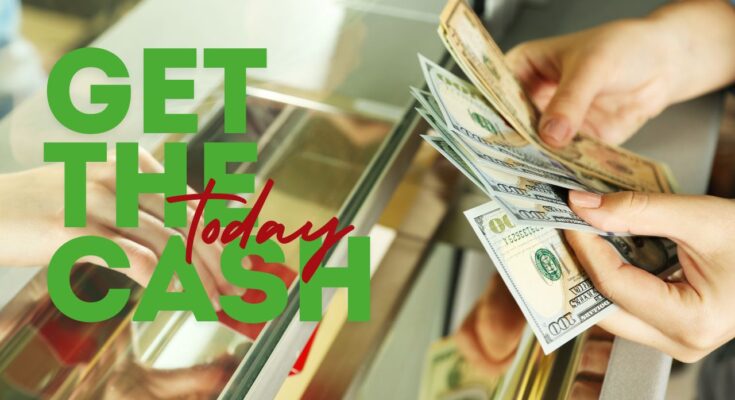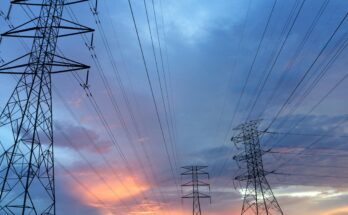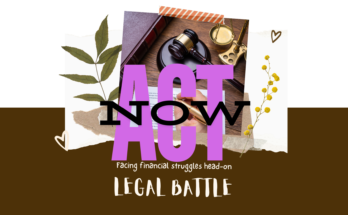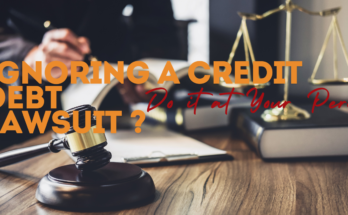Cash Advance: What It Is & How to Get One
A cash advance is a short-term loan from your credit card issuer. By taking a1 cash advance, you borrow against your card’s credit. You can get a2 cash advance in several ways, like at an ATM, with a bank teller, or by using special checks3. Usually, cash advances have higher rates and fees than regular purchases.

Key Takeaways
- A cash advance is a short-term loan from your credit card issuer
- Cash advances usually have higher interest rates and fees than standard purchases
- You can get a cash advance at an ATM, in person at a bank, or using special checks
- They can affect your credit score by raising your credit usage
- It may be better to look at personal loans or emergency funds before choosing a cash advance
Understanding Cash Advances
What Is a Cash Advance?
A cash advance lets you borrow a small amount through your credit card quickly4. It’s handy, especially for urgent needs, but costs more than regular card use4. Despite the ease it offers, it can lead to high expenses if not managed carefully4.
By getting a cash advance, you’re using part of your available credit5. But, remember, fees range from 3% to 6% of what you take5. Also, the interest is usually higher than what you pay on your card’s regular buys or transfers4.
An important point is you don’t get a grace period with cash advances45. The interest starts adding up right away, unlike with your usual credit card buys456. This could make repayments more difficult.
With a cash advance, you might also have a separate limit within your credit total4. So, the cash amount you access could be less than what your card’s limit suggests.
“Cash advances should be used with caution due to the potentially high costs involved.”
Although a cash advance can be quick and easy, it’s important to spot the fees and extra charges56. Make sure you know the deal before you take one. Exploring other cheaper choices first is always a wise move456.
WHAT IS A CASH ADVANCE? HOW DO I GET A CASH ADVANCE?
A cash advance is a service offered by credit cards. It lets you get cash by borrowing against your credit limit7. You can get this cash at an ATM with your credit card. Or you can go to your bank. You can also use convenience checks from your credit card company7. But, taking out cash this way is often more expensive. It can have higher interest rates and fees than buying things normally with your card7.
In 2023, the average APR for all credit cards was 20.09%7. For a 24-month personal loan, it was lower, at 11.48%7. But cash advances usually cost more. They may have higher interest rates and extra fees. For instance, you might have to pay 5% of the cash you get as a fee, or a minimum of $10, with most lenders7.
Before getting a cash advance, think about it. While it gives you quick money, it can cost a lot. And not paying it back quickly may harm your credit score2. Look into other ways to get money. Personal loans, apps that let you get paid early, or asking your job for an advance on your paycheck might be better options7.
I recommend the YouTube video below, as the creator offers an excellent explanation of the topic. The link to the video is available in the reference section.
Deciding to get a cash advance takes careful thought. You need to understand the fees, interest, and how it might affect your credit. By exploring your choices and planning for the costs, you can make the best decision for your money2.
Types of Cash Advances
Cash advances come in many shapes, each with unique traits. Knowing about these types can help you make wise choices8.
Credit Card Cash Advances
Credit card cash advances let you pull cash from your card. They have higher interest rates than regular buys. Plus, you might have to pay extra fees8. Things like sending money to friends, paying bills, and wire transfers can also count as cash advances8. Your card company sets how much you can take out, usually 20% to 50% of your limit9.
Merchant Cash Advances
Merchant cash advances help small business owners. They look at past and future sales to decide how much you can borrow. You then pay a slice of your daily sales back, often between 1.1 and 1.59. They’re good for businesses that have had credit problems10.
Payday Loans
Payday loans are quick but high-cost loans, usually for less than $500. They can be very expensive, with charges for every $100 borrowed. This can lead to an APR of 390% or more9. A big number of these loans get rolled over within a month, according to the Consumer Financial Protection Bureau10. They’re legal in only 26 states, with 16 of those states making lenders offer longer repayment options10.
It’s key to grasp the various cash advance types and their costs. This knowledge helps you and businesses align choices with your goals and needs8910.
How Cash Advances Work
A cash advance is a quick loan from your credit card. It lets you get cash right away. Getting a cash advance is simple but comes with some fees11.
- To start, go to your credit card company’s website or app.
- Tell them how much you need, within their set limits. These limits fall between 20% to 50% of your total credit, depending on your score11.
- Finally, use an ATM or have the money sent to your bank account.
Remember, cash advances have extra charges. A fee (usually 3% to 5% of the money) and instant interest apply, without a grace period. The interest rate is usually higher than normal purchases, making it more costly when not paid quickly1112. Buying certain things like money orders or lottery tickets can also count as a cash advance11. It’s wise to pay back more than just the minimum every month to avoid extra interest11.
With merchant cash advances, a business gets a lump sum. In return, the lender takes a set part of future sales. Usually, the business pays back 1.2 to 1.5 times the borrowed amount13.
Payday loans work differently. They’re quick loans with high fees. For every $100, you might pay $10 to $30 extra. The catch is, they’re short term, often due in just a few weeks. This short time to repay causes many to roll over the loan, paying more in fees and interest12.
“It’s crucial to understand the fees and terms associated with any cash advance to make an informed decision and avoid falling into a cycle of debt.”
Each type of cash advance has its own process. But, they all add extra costs. Understanding these is key to avoiding debt trouble111213.
Cash Advance Fees and Costs
Cash advances are costly due to various associated fees. It’s important to know the fee setup and other costs before choosing this option.
Cash Advance Fee Structure
Commonly, a 5% fee is charged on a cash advance or a minimum of $1014. Yet, fees can differ, depending on the credit card issuer. This can mean you pay more or less than 5%15. Also, cash advances usually have a higher APR than regular buys and no grace period. So, interest starts adding up from day one14.
For instance, if you grab a cash advance with a 5% fee, a 28% APR, and pay over six months, it can get costly14. There’s also the flat fee or percentage of the transaction, whichever is more15.
Other Potential Costs of a Cash Advance
Besides the upfront fee, there are other charges to be aware of. Cash advances often have a higher APR than usual purchases. Their APR can be about 24.80%, while normal credit card rates average around 16%16. The cost to use a cash advance might include a transaction fee, usually between 3% to 5%. Yet, some cards go as high as 5%, like the Chase Sapphire Preferred Card16.
The extra interest and fees can add up fast with cash advances. Let’s say you borrowed $500 at 25% APR and made the minimum payment of $15 monthly. It would take about 58 months and cost $362 in interest, plus a $25 fee16. Doubling the payment to $30 per month cuts this to 21 months with $120 in total interest. Tripling it to $45 monthly gets it done in 13 months with an extra $75 in interest16. Paying more than the minimum helps lower cash advance costs16..
To sum up, cash advances can be an expensive choice. Understanding the fee structure and costs is key when considering it141516.
Cash Advance Credit Card Options
When getting a credit card cash advance, choose a card with good terms17. Rates for cash advances are usually 20-25 percent APR17. Banks also charge fees for cash advance ATM use, with amounts differing by issuer17. Here are tips to lower costs:
- Low-Interest Cash Advance Credit Cards: Seek credit cards with low cash advance APRs17. In June 2024, personal loans had a 12 percent average interest rate17. A card with a similar rate would save you money on cash advances.
- No-Fee Cash Advance Credit Cards: Certain cards don’t charge a cash advance fee, making it cheaper18. Normally, there is a fee for cash advances18. So, avoiding this fee helps you save.
- Rewards-Earning Cash Advance Credit Cards: Some cards give rewards or cash back on cash advance use18. Even though cash advances have higher interest rates18, these rewards can offset the extra costs.
Choosing the right cash advance card means looking at the APR, fees, and rewards18. Using a credit card for purchases might be cheaper than a cash advance18. Also, having an emergency fund is wise. It reduces the need for costly cash advances18.
Why Cash Advances Are Expensive
Cash advances carry a high price for several reasons. One big reason is how interest starts to pile up right away19. This is unlike buying things with your credit card, which often has a grace period before interest starts19.
Moreover, the APR for cash advances is usually higher than for purchases19. So, you pay more in interest. You also face a cash advance fee, which might be a percentage of the advance (3% to 5%) or a fixed amount ($5-$10), or even both19. And don’t forget about possible ATM fees or charges by the bank19.
But it’s not just credit cards that are expensive. Think about payday loans. They come with high upfront fees that can lead to sky-high APRs, nearly 400% in some cases19. Some special credit card offers let you borrow cash at a lower rate than the usual purchase APR, without fees, money straight to your account. But these are hard to find19.
The costs of getting cash this way really add up20. You have the usual percentage-based fee, often 3% to 5%20. Then there’s the higher interest rate for the cash you take out, which also boosts the total cost. Plus, there’s the fact it starts accruing interest right away20.
To sum it up, it’s the bigger interest rates, the fees, and the other costs that make cash advances pricier21. The interest rate for a cash advance is typically between 20% and 25%21. The fee is usually 3% to 5% of the total, with a minimum of $1021. These elements, and the immediate interest, make cash advances a costlier choice compared to some other ways to get money21.
Alternatives to Cash Advances
If quick cash is needed, look at other options besides a cash advance. Some choices are likely to be better for your wallet22.
Personal loans usually have lower interest charges than cash advances. Interest rates can vary from 7% to 36% based on how good your credit is22. If some asset backs the loan, the rates can be lower still22. 401(k) loans are another option. They usually have rates only a bit higher than the prime rate22. But, you must be careful since failing to pay can carry heavy penalties.
If a credit card isn’t an option for you, consider Buy Now, Pay Later (BNPL) services. Nearly 40% of Americans use these23. Still, be wary. Some BNPL services and non-traditional loans have very high rates, up to 299%23. It’s best to look into different choices to find the right one for you and your finances.
FAQ
What is a cash advance?
A cash advance comes from your credit card company. It’s like a short-term loan. You get cash from your card’s credit line. This can be done at an ATM, a bank, or with special checks from your card company. But, remember, cash advances are more expensive. They have higher fees and interest.
How do cash advances work?
Think of a cash advance like borrowing cash from your credit card. It’s a way to get money fast. But, it’s pricier than using your card for purchases. You’ll pay more in fees and interest. So, use this option carefully because it can cost a lot.
What are the different types of cash advances?
Cash advances can be through your credit card, a merchant, or payday loans. The way to get them varies. You might use an ATM, go to a bank, or write a check from your credit card. Each type has its own process.
What are the fees and costs associated with cash advances?
There are several costs tied to cash advances. You will likely pay a fee upfront. This fee, plus the high interest rates, can add up. Other charges, like ATM or overdraft fees, may also apply. It’s wise to know all the costs upfront.
What should I look for in a cash advance credit card?
If you’re considering a cash advance, look for favorable terms. Seek a card with low fees and interest on cash loans. Also, find out if there are any rewards. This might help reduce the overall cost.
Why are cash advances considered expensive?
Cash advances cost more due to their high interest and fees. They’re meant for short-term or emergency uses. Because of the costs, other borrowing options could be better.
What are some alternatives to cash advances?
If you need money fast, consider other options. Personal loans, balance transfer, or loans from friends/family. These can be cheaper and offer better terms than a cash advance.
Disclaimer:
The topics discussed in this blog are for educational and informational purposes only. They do not constitute formal advice to act upon in any way. Readers should consult with a qualified professional before making any decisions or taking any actions based on the information provided. The author and the blog are not liable for any consequences resulting from the use or reliance on the information presented.
Source Links
- https://www.experian.com/blogs/ask-experian/what-is-a-cash-advance/ – What Is a Cash Advance and How Does It Work? – Experian
- https://www.chase.com/personal/credit-cards/education/basics/how-do-credit-card-cash-advances-work – Credit Card Cash Advance: What It Is & How It Works | Chase
- https://www.discover.com/credit-cards/card-smarts/cash-advance-on-credit-card/ – How to Get Cash From a Credit Card
- https://www.cnbc.com/select/what-is-a-cash-advance-and-how-do-they-work/ – What is a cash advance and how do they work?
- https://www.citizensbank.com/learning/what-is-a-cash-advance.aspx – Key Takeaways
- https://www.nerdwallet.com/article/credit-cards/what-is-a-cash-advance – What Is a Credit Card Cash Advance? – NerdWallet
- https://www.creditkarma.com/credit-cards/i/what-is-a-cash-advance – What is a cash advance and how does it work?
- https://www.capitalone.com/learn-grow/money-management/cash-advance/ – What Is a Cash Advance on a Credit Card? | Capital One
- https://www.forbes.com/advisor/credit-cards/what-is-a-cash-advance-and-should-you-get-one/ – What Is A Cash Advance And Should You Get One?
- https://www.investopedia.com/terms/c/cashadvance.asp – Cash Advance: Definition, Types, and Impact on Credit Score
- https://www.fool.com/the-ascent/credit-cards/how-credit-card-cash-advance-works/ – How Does a Credit Card Cash Advance Work? | The Motley Fool
- https://www.opploans.com/oppu/credit-cards/how-does-a-cash-advance-on-your-credit-card-work/ – How Does a Cash Advance on Your Credit Card Work?
- https://www.lendingtree.com/credit-cards/articles/cash-advance/ – What Is a Cash Advance?
- https://www.experian.com/blogs/ask-experian/what-is-credit-card-cash-advance-fee/ – What Is a Credit Card Cash Advance Fee? – Experian
- https://www.creditkarma.com/credit-cards/i/credit-card-cash-advance-fees – What is a credit card cash advance fee?
- https://www.bankrate.com/credit-cards/advice/how-to-minimize-the-cost-of-a-cash-advance/ – How To Minimize the Cost of a Cash Advance | Bankrate
- https://www.bankrate.com/credit-cards/advice/how-to-get-cash-from-a-credit-card/ – How To Get Cash From A Credit Card At The ATM | Bankrate
- https://bettermoneyhabits.bankofamerica.com/en/credit/what-is-a-credit-card-cash-advance – What is a Credit Card Cash Advance and the Associated Fees?
- https://www.myfico.com/credit-education/blog/cash-advance-fine-print – Before You Get a Credit Card Cash Advance, Read the Fine Print
- https://www.nerdwallet.com/article/credit-cards/cash-advances-good-idea – Are Cash Advances a Good Idea? – NerdWallet
- https://www.businessinsider.com/personal-finance/credit-card-cash-advances-pros-cons-alternatives – Introduction to Credit Card Cash Advances
- https://www.forbes.com/advisor/credit-cards/alternatives-to-cash-advances/ – Alternatives To Cash Advances
- https://www.bankrate.com/loans/personal-loans/online-cash-advance-alternatives/ – Online Cash Advances: What They Are Plus Alternatives | Bankrate
- https://youtu.be/MArcao70CCA– Pros and Cons of Getting a Cash Advance | Credit One Bank




